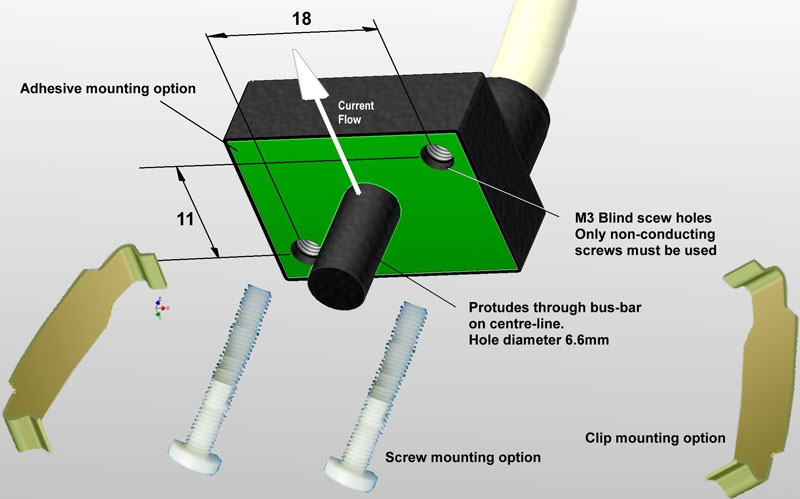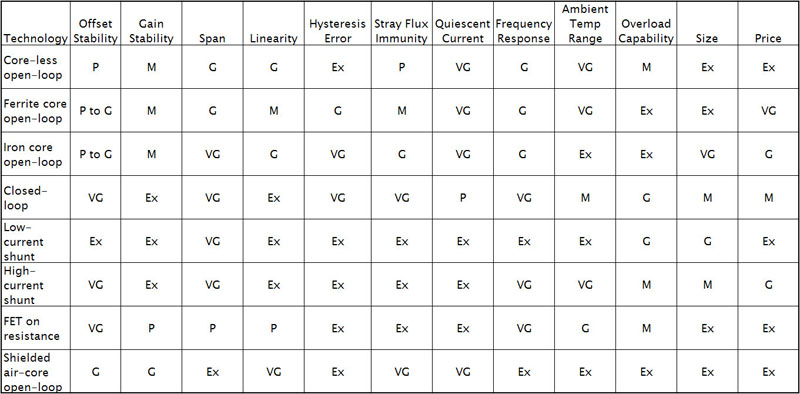Author:
Warren Pettigrew, Chief Technology Officer, Raztec Sensors
Date
08/28/2012
The Automotive industry has long been the ultimate test ground for electronic components. Few terrestrial environments present such a combination of demands as does the under-hood locale with its operating temperature range, mechanical shock and vibration, and electrically noisy environment. Above all, automotive electrical sensors must perform consistently well at cost points measured in tenths of a cent. Modern expectations of current sensors are very different from what they were even five years ago. As complexity grows, performance and reliability must increase disproportionally because of the challenge of repair and service in the field. This is particularly true in the electric-vehicle market, where many current sensors are now required to allow the management of routine (and not so routine) operations. It is just not practical to train vast numbers of service technicians. It is far better not to have failures, so repair and service is no longer a requirement. Another relentless expectation is cost reduction. The market disproved the old adage that you can have either "high quality or low cost, but not both" long ago. Automotive customers demand both and this does create challenges: Operating conditions Low voltage supplies are really the only option - typically 5 or 3.3 V. but not both to avoid the cost of dual supplies. Low quiescent power is also necessary to reduce power supply cost and bulk. This virtually eliminates power hungry closed-loop current sensors, which carry a cost premium as well. In some environments, sensors need immunity to large supply transients, which significantly complicates sensor power-supply design. Commonly, carmakers demand a -40 °C to +125 °C operating temperature range. This range requires that sensor makers carefully select materials and components for a sensor assembly. Magnetic field sensors must remain stable and the magnetic circuit must have stable characteristics over its operating flux range. Mechanical configuration In many applications, sensors mount in free air outside of any electronic enclosure. For these cases, sensors need to be water proof probably to an IP65 rating as well as mechanically robust. Many times customer-specific mounting is necessary along with an automotive style waterproof connection. Significant tooling and product design is therefore necessary to satisfy all interested parties. Designers must consider the cost of any additional components or space and include them into the cost of current sensing. Non-intrusive mounting is always preferable, especially for externally mounted sensors. Clips are preferable to screws. Screw heads, if present, must be readily accessible and, more recently, the use of an Automotive Industry standard Adhesive Transfer Tape mounting system permits reliable fixing with one sided access. The final installation must comply with shock and vibration requirements. Cables must route to protect from snagging, vibration, excessive heat, and corrosive fluids. Under-bonnet space is always a premium so size and weight are important quantities. Energy efficiency is steadily increasing in importance with each rise in the price of oil. Weight is doubly important for EVs as this reflects in the size and cost of the battery. Energy consumption relates directly to weight so carmakers count even small components. Where high currents are present, it is a real challenge to develop light-weight sensors. Current range: Where it is necessary to measure battery current, system designers often need to know both the peak discharge current - which may be many hundreds of amps, as well as the current at charge completion, which could be a fraction of an amp. No one economical sensor technology can presently perform over this span, so a hybrid of sensor types is necessary. This generally requires having a low-current sensor that is not corrupted by high currents in combination with an economical high-current sensor that also has good low-current performance. Apart from the challenge of measuring current over such a wide dynamic range, there is the challenge of measuring the sensor output over that range. Measuring milliamps to hundreds of amps has a span of say 100,000:1. If an ADC were to read this signal, it would need 17 bits resolution. This is obviously not practical, so again we see the need to split the range into two or three subranges. Stability Since the sensors have to operate over a very wide temperature range, their gain and offset need to be very stable. It is necessary to assess the effect of system performance with calculated drifts. Another important parameter if sensing low DC currents is the sensor's residual offset after a high DC load due to core remanence. This offset is generally in the order of 0.5A so accuracy below 1A will be very poor. There are very special low remanence core materials available, or degaussing may be an option, but these features add cost. In systems that implement cycle-by-cycle current control, the current sensor frequency response needs to be greater than 4X the fundamental frequency of the switching control system. Where the current sensor is to protect against overloads or short-circuits, its reaction speed needs to be matched against the likely rate of rise of current and the circuit tolerance to short-term overload. Fortunately, currents don't rise instantaneouslyâ€"V/L = dIL/dtâ€"and there is always some parasitic inductance: As a rule of thumb, a conductor has about 1 nH/mm inductanceâ€"less for bus bar, more for PCB traces. Voltages in HEV applications are creeping up, and so the isolating ratings of sensors must follow, with proper safety margins. Voltage ratings drive creepage and clearance dimensionsâ€"minimums for which standards provide. Sensors must also withstand and operate to specification under extremes of temperature and humidity, water-blasting, aggressive fluids, high vibration and shock, large electrostatic fields, large magnetic fields, and high electromagnetic fields. There are standards that define all of these under-hood environment factors. Still sensor providers and automakers must agree on the complete set of environmental conditions. Sensor technologies Where galvanic isolation is not necessary, shunts become an option. For low currents, they are attractive, but as currents get above 100 A or so, their bulk and cost grows exponentially. Larger shunts are also problematic for measuring high frequencies as their inductance causes inductive kicks of considerable magnitude. Sensor makers can manufacture low-current coreless open-loop hall-effect sensors in IC form so these can be low cost and do have their place for some applications generally in the 20A to 50A current range. The lack of core means lack of shielding against stray magnetic fields. Using a pair of hall sensors and making a differential measurement improves immunity to stray fields. However, the lack of a magnetic circuit to amplify flux strength does mean field strengths are low so sensitivities need to be set high, making this type of sensor vulnerable to drifts. Open-loop hall-effect sensors have good all around performance. Sensor manufacturers can select components such as core material and hall sensor to optimize performance for a particular application. Improvements in hall-sensing technology now allow these sensors to perform like some closed-loop technologies. The necessary compensating coil and its driving electronics add bulk and cost to closed-loop hall-effect sensors, but do allow for excellent gain stability and speed of operation. Because of their inherent shortcomings however, these sensors are not commonly used in an automotive environment. Measuring current through a FET's on resistance is a sensing option where precision is unimportant and low cost is a premium. The method is software intensive and needs a capable micro for signal processing. Thermal drifts are a menace and in-process calibration is essential but the result is nearly free. Shielded air-core open-loop high-current sensors take advantage of significant improvements in hall-effect devices, opening the way for precise direct differential sensing of current generated magnetic fields. Differential field sensing provides immunity to common-mode fields. Screening provides immunity to primary-generated electrostatic fields. Hybrid techniques improve frequency response. The significant benefits of this technology are its ease and flexibility of mounting and its small size (Figures 1 and 2). The sum of qualities very much aligns this technology to automotive needs.


A summary of these various sensing technologies appears in Table 1. There, the grading are Exâ€"excellent, VGâ€"very good, Gâ€"good, Mâ€"modest, and Pâ€"poor. Raztec Sensors